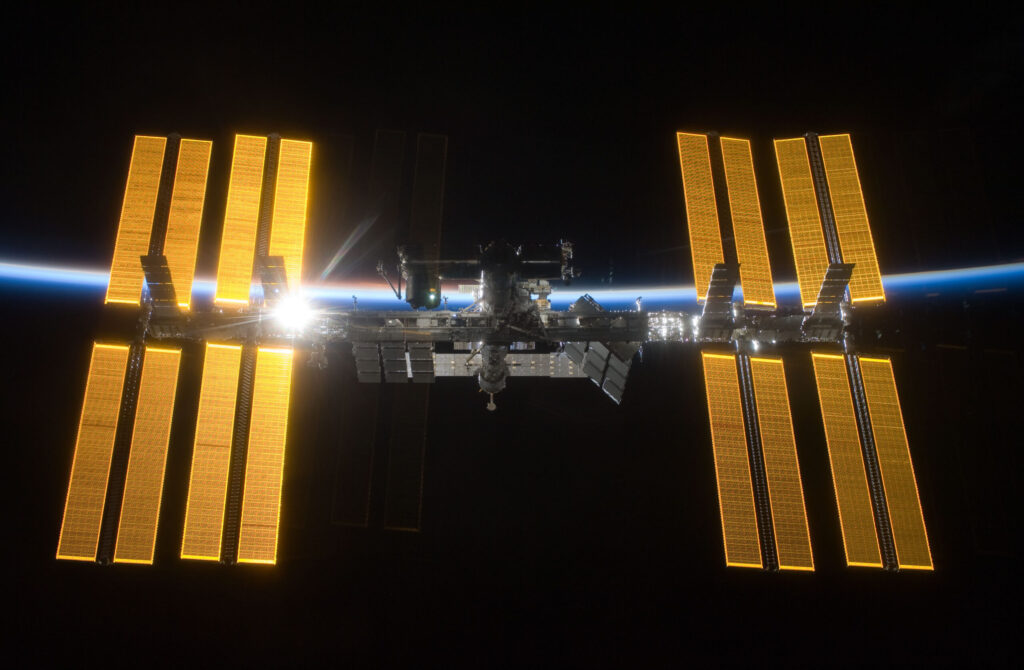Plants need light to live and grow, and it takes a lot of energy to grow plants using man-made light fixtures. So why don’t we use sunlight instead?

Why don’t we use sunlight to grow plants on the International Space Station?
| Engineering challenges | Windows take a lot of time, effort, and money to design and build in space. They are not worth the cost, given the availability and low cost other lighting options. |
No long periods of darkness |
The ISS orbits the Earth, so it receives daylight for 45 minutes and darkness for 45 minutes. Plants have a circadian rhythm, and need long periods of darkness for their metabolism to function properly. |
| Flexibility | In 2017, NASA decided to send a second Veggie unit to the ISS. Adding a second Veggie would have been much more difficult if we had to modify the ISS to let in more sunlight. Using lighting technology allows us much more flexibility in what we design and where we place it in the vehicle. |
Why don't we use sunlight to grow plants on Mars or the Moon?
| Engineering challenges | Windows take a lot of time, effort, and money to design and build in space. They are not worth the cost, given the availability and low cost other lighting options. |
| iiiiiiiiiiiiiiiiiiiiiiiiii Inadequate light intensity iiiiiiiiiiiiiiiiiiiiiiiIIIIiii |
Mars is much farther from the sun than Earth, so it receives less than half as much sunlight as on Earth. This means plants will grow more slowly, and won’t make as much food. |
| Extended day length |
One moon day is about 29.5 Earth days long, so a lunar base would get about 2 weeks of nonstop sunlight followed by 2 weeks of darkness. This would inhibit plant growth. In comparison, Mars days are about 25 hours long, very close to our 24-hour days on Earth. |
| Flexibility | Using lighting technology allows us much more flexibility in the environments we design and where we place the plant growth chambers. |
History of Grow Lights
People have been using light bulbs to grow plants since 1861. For the past 50 years researchers primarily used high pressure sodium (HPS) lamps, but these are not well suited for growing plants in space, since they’re bulky and emit a lot of excess heat. In the search for space-age grow lights, scientists considered incandescent lamps, fluorescent lights, and other types of bulbs, but these options were too short-lived, inefficient, or potentially dangerous for continuous use in spaceflight. Astrobotanists needed a better lighting option, and eventually they found LEDs.
LED Grow Lights for Astrobotany
Light emitting diode (LED) technology isn’t new—in fact LEDs have been in development since 1939—but LEDs weren’t used to grow plants until NASA researchers studied them for astrobotany. In the early 1990’s the NASA Research Partnership Center at the University of Wisconsin-Madison tested LEDs for plant lighting, which led NASA scientists to publish some of the first papers on LED-based grow lights. LEDs are well-suited for spaceflight—they are energy efficient, long-lasting, lightweight, and emit very little heat. NASA’s development of LED grow lights in the name of astrobotany has benefitted many plant-related industries around the world.

Why use LEDs instead of sunlight?
We currently use LEDs to grow plants on the International Space Station in the Veggie and Advanced Plant Habitat. When we look to the future, we will probably continue to use LEDs to grow plants in space, since LEDs are much more reliable than sunlight in the context of space travel. Developments in LED technology are also making them more efficient, so growing plants under LEDs is much cheaper than it was 10 years ago. Still, growing plants under LEDs takes a lot of energy, so scientists are still considering ways to add supplemental sunlight to future space growth chambers. NASA researchers and scientists at the University of Arizona are considering fiber optic technology to see if they can concentrate sunlight and deliver it to the plants without the complicated engineering of building windows in spacecraft.
There’s no promise that fiber optics will work in space, but perhaps this technology could make it easier for us to grow plants indoors on Earth. Developments like fiber optics are part of the reason that many people find astrobotany so exciting: astrobotanists collaborate with diverse teams to design cutting-edge technology that will change the way humans live and work in space and on Earth.
References
- Astronauts Answer Student Questions
- Plant Circadian Rhythms
- A Brief History Of Grow Lighting – Part One
- Innovations in LED lighting for reduced-ESM crop production in space
- NASA Spinoff: High-Efficiency LEDs Grow Crops, Stimulate Alertness
- NASA designs an inflatable greenhouse for Mars
- What Are Days and Nights Like on the Moon?
- NASA: How Far? How Faint?
